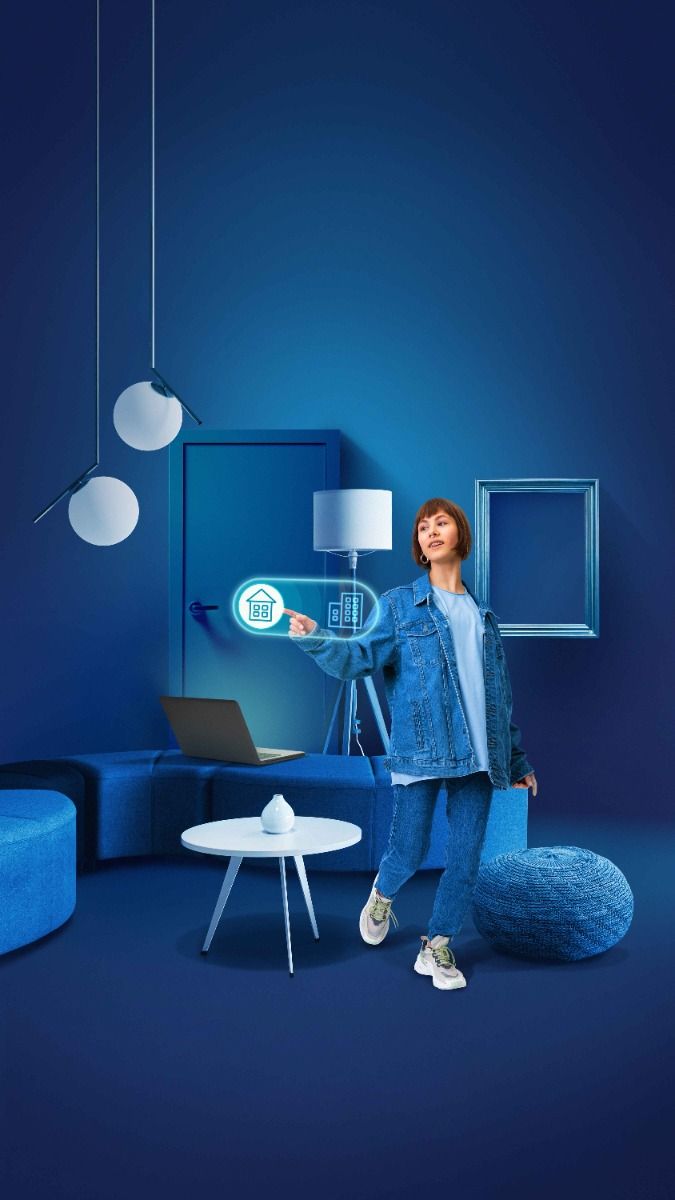Smart Home Technology and IoT: A Revolution in Home Automation and Connectivity in 2025
Smart Home Technology and IoT: In 2025, the rise of smart home technology and the Internet of Things (IoT) is completely transforming how we interact with our living spaces. The vision of a fully connected, intelligent home is becoming a reality, with smart devices that automate daily tasks, enhance security, optimize energy use, and make life more convenient. With the advent of IoT, homes are now equipped with devices that communicate with each other, learn from user behavior, and anticipate needs, creating seamless and personalized experiences for homeowners.
In this article, we will explore the role of smart home technology and IoT in reshaping modern living, the innovative devices available in 2025, and the key benefits and challenges of this technological revolution.
What is Smart Home Technology?
Smart home technology refers to a suite of devices, systems, and appliances that are interconnected via the internet and can be controlled remotely or automatically. These devices allow homeowners to monitor and control various aspects of their homes, from lighting and temperature to security systems and entertainment.
At the core of a smart home is the Internet of Things (IoT), which enables different devices to communicate with each other, share data, and work together to create an optimized living environment. Whether through smartphones, voice assistants, or smart hubs, smart home technology empowers homeowners to make their living spaces more efficient, secure, and enjoyable.
The Role of IoT in Smart Homes
The Internet of Things (IoT) is the key enabler of smart home technology. IoT refers to the network of physical devices that are embedded with sensors, software, and connectivity to collect, exchange, and analyze data. These devices can range from smart thermostats and security cameras to fridges and watches. Through IoT, these devices can “talk” to each other, creating a smart ecosystem within the home.
Key Features of IoT in Smart Homes:
- Automation: IoT allows smart devices to perform tasks automatically, such as adjusting the temperature, turning off lights, or locking doors when they sense the homeowner’s presence or absence.
- Remote Control: Through smartphones or voice-controlled platforms like Amazon Alexa, Google Assistant, and Apple Siri, homeowners can control their smart devices remotely from anywhere in the world.
- Personalization: IoT devices can learn from user behavior and preferences, making automatic adjustments based on routines. For example, a smart thermostat can learn when you wake up and adjust the temperature accordingly.
- Data Analytics: IoT devices collect data, which can be analyzed to provide insights into energy consumption, security patterns, and even health metrics for smarter decision-making.
Popular Smart Home Devices in 2025
1. Smart Thermostats
Smart thermostats, such as Nest and Ecobee, are one of the most popular smart home devices. These devices allow users to control the temperature of their home remotely through an app or voice assistant. They use IoT and machine learning to adjust temperatures based on a homeowner’s preferences and schedule, ultimately saving energy and reducing utility bills.
2. Smart Security Systems
Security is a top priority for homeowners, and smart security systems have taken home protection to the next level. Devices like Ring doorbells, Arlo security cameras, and smart locks allow homeowners to monitor their property in real-time through apps and receive alerts if unusual activity is detected. These systems can be integrated with motion sensors, alarms, and smart lights to create a comprehensive security ecosystem.
3. Smart Lighting
Smart lighting systems like Philips Hue or LIFX allow homeowners to control the brightness and color of their lights remotely, set schedules, and even adjust lighting based on their mood. These systems are compatible with voice assistants and can also be synchronized with other smart devices in the home, such as motion sensors or security cameras, to enhance security and energy efficiency.
4. Smart Appliances
The future of kitchen appliances is becoming smarter with the introduction of devices like smart refrigerators, oven ranges, and dishwashers. Samsung Smart Fridges can notify you when you’re low on groceries, suggest recipes based on available ingredients, and even let you view the contents of your fridge remotely through your phone. Smart ovens like June Oven can recognize what you’re cooking and adjust the settings automatically.
5. Smart Home Assistants
Voice-controlled assistants like Amazon Echo, Google Home, and Apple HomePod serve as the central hubs for many smart home ecosystems. These devices connect to other smart devices and allow homeowners to control them using simple voice commands. In addition to controlling other devices, they can provide weather updates, set reminders, and even play music or podcasts.
6. Smart Plugs and Outlets
Smart plugs and outlets, such as those from TP-Link and Belkin, allow users to turn regular devices into “smart” devices by plugging them into a connected outlet. Homeowners can control lights, fans, or small appliances remotely or set schedules to turn devices on and off, which helps conserve energy.
7. Smart Health Devices
Health-focused IoT devices, such as smart scales, fitness trackers, and sleep monitors, are becoming increasingly popular. These devices track vital health data and send it to health apps, providing insights into fitness and wellness. Withings and Fitbit offer devices that help users monitor their health, while smart air purifiers and smart water filters improve indoor air and water quality.
Benefits of Smart Home Technology and IoT
1. Convenience; Smart Home Technology and IoT
Smart home devices make life easier by automating everyday tasks and allowing remote control. From adjusting the temperature to turning off lights, you can control various aspects of your home with a touch of a button or voice command, even when you’re not physically at home.
2. Energy Efficiency; Smart Home Technology and IoT
By automating the operation of heating, cooling, and lighting, smart home technology helps reduce energy consumption. Smart thermostats, for example, can optimize heating and cooling based on the time of day or occupancy, lowering utility bills and reducing environmental impact.
3. Enhanced Security; Smart Home Technology and IoT
Smart security systems give homeowners peace of mind by providing real-time alerts and video feeds. Integration with other devices, such as smart lights and locks, increases the overall security of the home. In case of an emergency, smart systems can send alerts to both homeowners and authorities.
4. Personalization; Smart Home Technology and IoT
Smart home technology can learn user preferences and habits over time. For instance, smart lights can automatically adjust to your preferred brightness and color, or the thermostat can learn your preferred temperature setting at certain times of the day. This level of personalization enhances comfort and convenience.
5. Accessibility; Smart Home Technology and IoT
Smart home technology is especially beneficial for elderly individuals or people with disabilities, as it offers voice-controlled devices and automation that improve accessibility. For example, lights, doors, and thermostats can be controlled without having to move or manually interact with them.
Challenges of Smart Home Technology and IoT
While smart home technology and IoT offer numerous benefits, they also come with challenges:
1. Privacy and Security Concerns; Smart Home Technology and IoT
With smart devices collecting data about your habits and activities, privacy becomes a major concern. Protecting personal data from cyberattacks and ensuring that devices are securely connected is a key issue that needs to be addressed.
2. Compatibility and Integration; Smart Home Technology and IoT
As the number of smart devices increases, compatibility between different brands and platforms becomes an issue. Homeowners may struggle to integrate devices from various manufacturers, leading to confusion and frustration. Universal standards and more seamless integration are needed to overcome this challenge.
3. High Initial Costs; Smart Home Technology and IoT
While smart home devices can lead to long-term savings, the initial cost of purchasing and setting up a smart home system can be high. For many people, the investment in IoT technology may not seem worth it unless they see significant benefits in energy savings or convenience.
4. Complexity; Smart Home Technology and IoT
For individuals who are not tech-savvy, setting up and using a smart home can feel overwhelming. The complexity of configuring multiple devices, apps, and automation rules may create barriers to entry for some homeowners.
The Future of Smart Homes and IoT
Looking ahead, smart home technology and IoT are poised for continuous evolution. As more devices become connected and as artificial intelligence (AI) and machine learning (ML) play a bigger role, homes will become even smarter, more adaptive, and more efficient.
Increased automation, interoperability between devices, and more advanced AI algorithms will provide deeper insights into homeowner behavior and allow homes to anticipate needs, such as adjusting lighting based on time of day or automatically adjusting temperature for optimal comfort.
In the near future, homes will likely become more self-sustaining, using energy more efficiently, optimizing energy consumption, and even integrating renewable energy sources like solar panels.
Conclusion: Smart Home Technology and IoT
Smart home technology and IoT have already begun transforming how we live, offering convenience, security, and energy efficiency. As 2025 approaches, we can expect these technologies to become even more integrated into our daily lives, creating smarter, more intuitive living spaces. The future of homes is connected, and with advancements in AI, automation, and interoperability, our homes will become more efficient, personalized, and sustainable than ever before.










